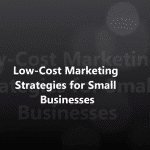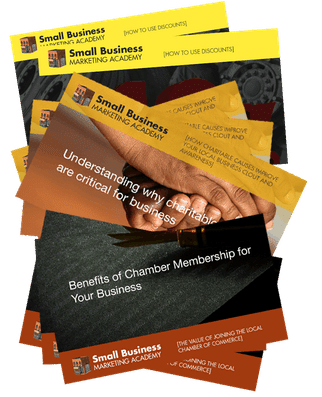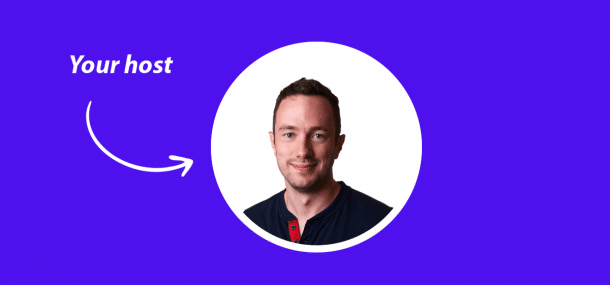

- Directory
- Recent
-
Featured
-
Featured
- Recent
-
- Programs
- Digital Nomad
- Side Gigs
- Resources
Select Page
10 people find this post amazing!

But have you considered how to turn Amazon into your business partner? How to make money on amazon? Do you want to learn to run a business in a step by step process? Earn some extra money through amazon.
Over the past 11 months, I’ve created a business selling private-label products on Amazon — buying a generic product, then selling it under my own brand. The result: a steady, mostly passive income of between $1,000 and $2,000 a month.
Essentially, the business involves finding generic products that are already selling well on Amazon, creating your own packaging and logo, and marketing them better than your competition.
Sound appealing? Let’s break it down step by step for an actionable look at how to build your own private-label business.
Before diving in, though, it’s important to understand this isn’t a get-rich-quick strategy.
While you can realistically make hundreds or thousands of extra dollars per month, it takes diligence, patience, and a willingness to see an idea through from start to finish. To be most successful, set your expectations accordingly.
This is arguably the most important and time-consuming step in the process, but the friendly folks at Amazon lighten the burden a bit by pointing you in the right direction.
That’s because the site releases detailed lists of their best-selling products. While the lists are designed to give consumers a chance to see what’s popular, you can use them to your advantage, too.
The best-seller rankings essentially serve as your pre-market product research. Instead of developing a product and then testing to see if it sells well, you can start by seeing if the product sells well and then make a decision regarding whether or not you want to pursue it.
When mining Amazon’s top-100 rankings for each category, be on the lookout for items that are lightweight, high-ranking, and generic.
Generic refers to something like a water bottle, silicone spatula, or flashlight — all items that can easily be produced with your own brand and packaging. In other words, you wouldn’t want to select a product that’s brand-driven — such as an iPhone or Nike running shoes — because those are protected products that can’t be private-labeled.
Once you find a product that you’re interested in, it’s time for phase two of the product research stage.
During this phase, study your competition to see how they’re doing.
Using the information you gather from these five listings, which serve as your sample of the marketplace, determine whether the opportunity is worth pursuing.
Ideally, you want to see the following in your spreadsheet:
Don’t be afraid if you can’t find a product right away. It usually takes me hours of research to find an opportunity I believe will work.
However, let’s say your research for insulated water bottles met all of these requirements. Now you’re ready to find a supplier.
Once you know you have a good product opportunity, it’s time to find a supplier.
Find the style you’re looking for and research a few different suppliers. Depending on how thorough their listings are, you can usually see the required minimum order quantity (MOQ), price range, style options, lead time, and whether they allow for private labeling. However, you’ll need to email the supplier to get an accurate quote for your order.
I’ve found suppliers are willing to negotiate, even on your first order. While they may claim their MOQ is 500 or 1,000 units, it’s entirely possible to talk them down to, say, 250 or 300 units.
Generally, there’s also room for negotiating prices. Just act confident and pretend you’ve been there before — even if you haven’t!
To save time and streamline the process, you can often work on step three alongside step two.
Once you’ve found a supplier who’s willing to let you private label the product, you have to choose your marketing materials. Don’t worry, though — you don’t have to create them yourself!
Use a website like Fiverr or Upwork to hire professional designers at competitive prices.
On Fiverr, you simply search for designers and then send them your job proposal. On Upwork (formerly Elance), you’ll actually create a project proposal and have designers bid for your project. I’ve used both sites, but prefer Elance/Upwork for packaging and logo design.
Assuming you’ve had time to develop a brand name during this process, you’ll want your designer to create a logo that represents your brand and vibrant packaging that sets it apart from your competitors — the ones listed in your spreadsheet from step one.
Once you have your design files, send them over to your supplier and tell them to proceed with your order.
Depending on your supplier’s lead time, you could wait anywhere from 10 to 30 days for your shipment to arrive.
Use this time wisely. Start by focusing on your listing. Follow Amazon’s directions and protocol for creating a seller account and then create a listing for your product.
To create a compelling listing:
While you’ll have to work within the constraints of what Amazon does and does not allow on listings, you should be able to use bolded text and bullet points to accentuate key facts.
As you likely noticed during step one, many sellers don’t do a good job with their listings, yet still sell well. Can you imagine how many more units they would sell with descriptive listings?
This is your chance to set your product apart and differentiate your brand as knowledgeable and informative.
Some of you are probably saying, “This whole process doesn’t sound like passive income.”
Well, up until now, you may be right. However, assuming you did a thorough job in the previous steps, you’re almost ready to sit back and reap the benefits.
Thanks to the Fulfillment by Amazon (FBA) program, you don’t have to manage the monotony of picking, packing, and shipping orders.
While FBA takes a small percentage of your profits, it’s well worth it for most sellers. Your shipping costs are included in the fees and your products automatically become eligible for free Prime shipping, which could help you make more sales.
Plus, FBA sellers often enjoy higher search rankings than non-FBA sellers. While Amazon hasn’t officially confirmed this, I’ve noticed it with my own products and friends have seen similar benefits.
For detailed information on how to set up an FBA listing, how it works, pricing, success stories, and more check out Amazon’s guide for getting started.
Once you set up your listing and ship your products to the distribution center, you can be as hands-off as you’d like. When a customer makes a purchase, you don’t even have to lift a finger. Amazon’s fulfillment centers take care of everything, including returns and customer service issues.
In any business or industry, the first sale is typically the hardest to make. You don’t have a reputation or any existing customers, so it can be challenging to convince someone to purchase your product.
Many sellers run some sort of sale or discount during a product’s launch. By reducing the price, you lower the customer’s perceived risk and entice them to take a chance on your product.
You can also use Amazon’s internal advertising system, which allows you to pay for your product to be listed in relevant on-site searches. This is a great way to increase visibility and attract an initial burst of sales.
Since different types of products have different price points and associated costs, these numbers are estimates. However, here’s an idea of your potential earnings.
Products that rank within the top 100 in their category often bring in thousands of dollars per day in revenue. Products that rank in the top 500 typically produce hundreds of dollars per day. Even a product in the top 2,000 to 3,000 can earn you a steady supplemental income.
While it’s difficult to estimate the initial investment for your own private-label brand, since it depends on your product, I can give you an idea of how much I spent on my first one, a basic grilling accessory.
I ordered 500 units at a per-unit cost of $3.20. In addition to the $1,600 cost of initial inventory, I spent around $400 to design my packaging and logo, start a website, set up my Amazon business account, and pay other minor expenses. So launching my first private-label brand cost me about $2,000.
Look for a healthy profit margin. I like to aim for a per-unit profit margin of at least 50%. It all depends on the product, but there’s a niche for every budget.
While there’s a lot of information in this guide, it’s by no means comprehensive. Dig around, do some research, speak with other sellers, and find out what else you can do to make your private-labeling business a successful and lucrative endeavor.
Your Turn: Will you try launching a private-labeling business? If you’ve sold private-labeled products, we’d love to hear about your experience!
“Do the thing you are afraid to do and the death of fear is certain.” ~ Ralph Waldo Emerson
“Take time to deliberate, but when the time for action has arrived, stop thinking and go in.” ~ Napolean Bonaparte
“You cannot score a goal when you are sitting on the bench. To do so, you have to dress up and enter the game.” ~ Israelmore Ayivor
Learn More about Commission Hero here: Click Here Now!
Learn More about the Academy here: Click Here Now!
The Crucial Constructs Academy is a Free Video Training Course Available only to our Readers and Subscribers. A thorough and detailed training available to you. Find out more about it here. Click and Learn.
Table of Contents

Achieve Your Goals Now!
